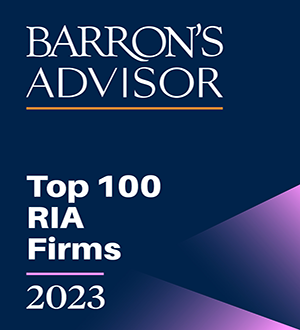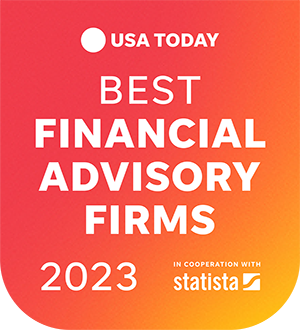Investment Outlook Winter 2021
By Argent Wealth Management, LLC on December 31, 2021
Bull Market to Continue. But Expect more Volatility!
The 2022 Outlook:
Expect the bull market for stocks to continue in 2022 as the economy grows along with earnings. However, investors should be prepared for a double-digit correction in 2022, something we did not see in 2021. A 10-15% type of correction is not atypical in a bull market and provides opportunities for astute investors. Bond yields will continue to grind higher as they did in 2021. Expect international and small cap stocks to perform better relative to large cap U.S. indices after underperforming in 2021.
Economy and Earnings Continue to Grow
The Organization for Economic Co-operation and Development (OECD) composite index of 10 leading indicators for the United States is near record levels. Historically, this indicator moves incrementally towards zero prior to a recession which can be seen in the chart below for the previous three recessions. Barring any acute unforeseen event (like COVID-19 in 2020), it is unlikely that the economy will fall into a recession in the next year.

Earnings are also expected to grow by about 16% in 2022 according to Factset; interestingly, estimates for 2022 earnings have increased through 2021. Corporate balance sheets remain strong. Debt relative to cash flow is low relative to history, and interest coverage is at its highest point in 50 years. Companies can absorb potentially higher interest rates due to low relative debt levels.
Economic growth, earnings growth, and strong corporate balance sheets will continue to support the upward trajectory of stock markets.
Corporate Leverage and Interest Coverage Ratio

Source: Ned Davis Research Inc. © 2021
International and Small Cap Stocks
Through December 31, 2021, the S&P 500 has outpaced the Russell 2000 index of small cap stocks, the MSCI EAFE index of international developed stocks, and the MSCI Emerging Market index.
According to Factset, the Russell 2000 index is at just over 1x the estimated next twelve months (NTM) P/E of the S&P 500. The MSCI EAFE index is at .75x the estimated NTM P/E of the S&P 500. The MSCI Emerging Markets index is at .6x the estimated NTM P/E of the S&P 500. All three are at or near their lowest relative valuation in 10 years. For this reason, investors should expect these indices to perform relatively better in 2022 and beyond.
ETF Index Returns

Double Digit Correction
The chart below shows the number of days historically that the S&P 500 has gone before a 5, 10, or 20% correction. The S&P 500 has now gone 448 days without a correction of 10% or more. As indicated below, the average number of days without a 10% correction in bull markets is 331 days. Therefore, it would not be surprising to see a correction sometime in the first half of 2022.
S&P 500: Number of Days Before the Start of 5%, 10% and 20% Corrections

Source: Ned Davis Research Inc. © 2021
Interest Rates Rise
Bond market investors expect more compensation in the form of yield if inflation and growth expectations increase so it was not surprising to see yields rise in 2021. However, real yields (yield of a treasury bond minus inflation) remain negative. This means investors are Us

Generally, an increase in yields coincides with an increase in economic growth, which serves as a positive tailwind for stocks. However, stocks are valued based on the present value of their future cash flows. Accordingly, the chart below shows valuations and interest rates have an inverse correlation. If the 10-year treasury yield were to move towards 2%, it would be reasonable to expect the P/E on the S&P 500 to move from ~21 to ~18. This seems to be where the S&P 500 migrated to the last time 10-year treasuries yielded 2%. That would be about a 14% drop in valuation. This alone could cause a double-digit correction.
It is not hard to see how a double-digit correction could ensue in the coming quarters when this is combined with additional risk factors such as political or Federal Reserve policy uncertainty, higher than expected inflation, and/or additional concerns about future COVID-19 variants.

Although any of these factors could be part of a double-digit correction, it won’t end the bull market as earnings are expected to grow along with the economy.
When Does Bull End?
In addition to the leading economic indicator chart summarize earlier in this Quarterly, it is important to watch the yield curve. A flattening of the yield curve implies a slowdown in future growth. An inversion of the yield curve (when the 2-year bond has a higher yield than the 10-year bond) implies a recession is on the horizon.
Spread vs. US Benchmark Bond – 2 Year

Other Assets to Consider
Gold and Real Estate
Gold may serve as a useful asset to add to a stock and bond portfolio. It tends to do well when inflation is higher than treasury bond yields (this is referred to as a negative real yield enviornment). Currently, the real yield is -4.9% according to Ned Davis Research. Gold also has correlation benefits when added to a stock and bond portfolio, which lowers volatility. It can do well in an inflationary environment but can also act as a more defensive asset at times.

Real estate is a scarce, finite asset. Therefore, it can act as an inflation hedge and generate an annual income distribution that is typically higher than bonds. Investors can own private, commercial real estate that is professionally managed. Managers can own a mix of multi-family, hospitality, distribution facilities, cloud facilities, office buildings and retail locations. Depending on the leverage used and asset mix, investors can expect yields in the 3-7% range.
Bitcoin, Cyrptocurrency, and Blockchain Technology
Bitcoin adoption will continue. Bitcoin is an open, permisionless, decentralized, secure, and transparent asset. It has a fixed supply (it is scarce). It is mined and on a blockchain, giving it proof of work and proof of stake. Bitcoin block technology incentivizes miners to use energy to “extract” it and verify transactions. This is digital mining. Bitcoin already has network effects, including technology built around it, that has and will continue to increase the network’s value. “On-chain” metrics can be used to understand if Bitcoin is attractively priced relative to history. This includes ratios like current market value to average cost basis (the lower the more attractive). Since Bitcoin is scarce, it can be a storer of value, like gold. However, unlike gold, it can also be used to instantaniously transact with any other entity around the world without permission through a smartphone, or a basic computer. Most of bitcoin is stored offline (cold storage) as would be a real asset. The majority of currenciesaround the world are unstable. Citizens don’t trust the government to be good stewards. Bitcoin solves for this. Bitcoin’s monetary policy was set at the outset and will not change as there is no central authority in charge.
Beyond Bitcoin, cyrpto and blockchain technology is central to the internet and banking innovations. Decentralized, peer-to-peer, and immersive (digital twin) experiences will connect blockchain innovations to the internet. It will also allow many oppressed and underbanked individuals to have more control of their life though use of assets to exchange value without government control or permission.
Fourth Quarter Returns
Like the full year of 2021, growth stocks and large cap stocks outpaced small cap stocks and international stocks in Q4.

Unlike most of the year in 2021, long-term treasury bonds outperformed short-term corporate bonds. Although interest rates rose for most of the year, 10-year treasury yields moderated in Q4, and 20-year treasury yields flattened (came down) relative to 10-year treasury yields.

Sign up to receive more information about Argent's Services and Solutions.
Argent Wealth Management, LLC is a group comprised of investment professionals registered with Hightower Advisors, LLC, an SEC registered investment adviser. Some investment professionals may also be registered with Hightower Securities, LLC (member FINRA and SIPC). Advisory services are offered through Hightower Advisors, LLC. Securities are offered through Hightower Securities, LLC.
This is not an offer to buy or sell securities, nor should anything contained herein be construed as a recommendation or advice of any kind. Consult with an appropriately credentialed professional before making any financial, investment, tax or legal decision. No investment process is free of risk, and there is no guarantee that any investment process or investment opportunities will be profitable or suitable for all investors. Past performance is neither indicative nor a guarantee of future results. You cannot invest directly in an index.
These materials were created for informational purposes only; the opinions and positions stated are those of the author(s) and are not necessarily the official opinion or position of Hightower Advisors, LLC or its affiliates (“Hightower”). Any examples used are for illustrative purposes only and based on generic assumptions. All data or other information referenced is from sources believed to be reliable but not independently verified. Information provided is as of the date referenced and is subject to change without notice. Hightower assumes no liability for any action made or taken in reliance on or relating in any way to this information. Hightower makes no representations or warranties, express or implied, as to the accuracy or completeness of the information, for statements or errors or omissions, or results obtained from the use of this information. References to any person, organization, or the inclusion of external hyperlinks does not constitute endorsement (or guarantee of accuracy or safety) by Hightower of any such person, organization or linked website or the information, products or services contained therein.
Click here for definitions of and disclosures specific to commonly used terms.



